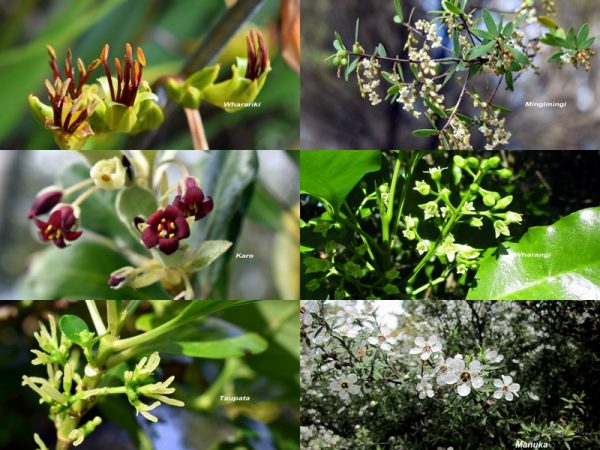
Spring releases a fresh sense of urgency in the forest. Here in New Zealand, spring begins on the first day of September. I listen for the harbinger of the season, pipiwharauroa, the shining cuckoo, whose long soprano aria, almost a whistle, rises at the end to a higher pitch as if to ask the question “Are you ready for spring?”
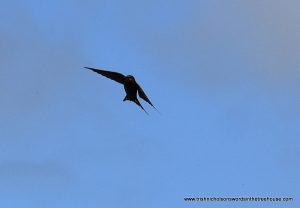
Regular migrants and existing residents prepare nests for a coming generation. Swallows, sparrows, thrushes, white-eyes, fantails and tiny grey warblers swoop passed me trailing ambitious cargoes from their beaks: clumps of moss, bunches of dry grass, lengths of twine, even tangles of my hair brushed out some morning and blown into the bushes. [The Five Acre Forest]
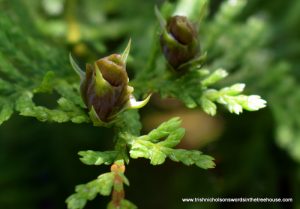
Native forest trees, podocarps, conifers of ancient ancestry that I began planting on the Dune twenty years ago are still in their juvenile forms. Yet, kauri, totara, and kawaka (New Zealand cedar) are already producing cones or seeds according to their habit. Some are 10 metres tall, but over the next 40 or 50 years they will grow to twice or three times that height, shedding their lower branches in the process to form their characteristic crowns.
Native broadleaf trees, all evergreen, have long been producing flowers and fruits which sustain a loquacious choir of birds. Puriri trees flower at intervals throughout the year providing a continuous supply of nectar and fruit, and pigeonwood is so generous with berries, and wise to ripen them to bright red gradually throughout autumn and winter, that there are usually a few left even the following spring.

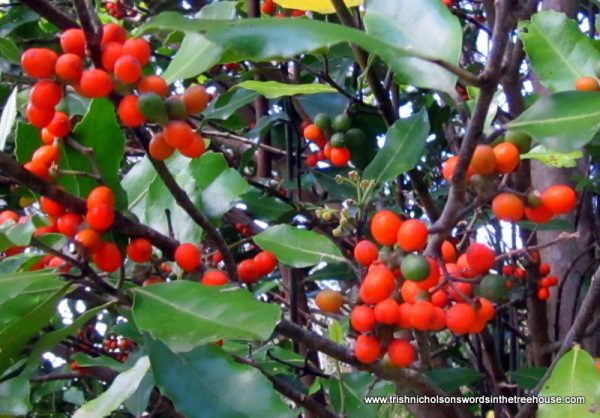 Berries of pigeonwood, porokaiwhiri (Hedycarya arborea)
Berries of pigeonwood, porokaiwhiri (Hedycarya arborea)
Smaller trees and shrubs in the understorey offer pollen and nectar to bees and, with their help, full pantries of berries in every colour and flavour for the burgeoning bird population. Some flowers are so tiny, such as the dangling earring blossoms of mingimingi, they are pollinated by smaller insects.
Time and calendars are human inventions though; nature follows her own rhythms. And as these depend on sea and air currents as well as temperatures, climate change is affecting the timing of seasons.
Over the past twenty years we experienced droughts a couple of times, but severe summer droughts have occurred for the last two years and winter rainfall has not compensated for deep-soil water loss. Some trees cope better than others. Outcomes vary as each species, and each individual in its specific site, launches whatever adaptations it has the strength and natural capacity to make.
One of the delights to look forward to in spring is the burst of shimmering gold when the kowhai (Sophora spp.) blossom. Kereru, the native wood pigeon, love them so much they sometimes strip the tree in a gluttonous frenzy. But this year, kowhai flowers are still in tight bud and there are fewer of them.
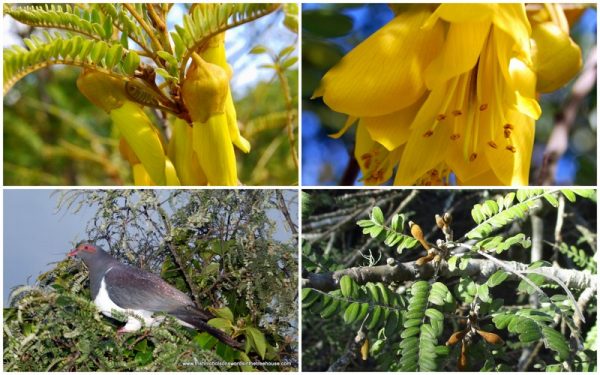
Trees learn to conserve water and pace their growth. A young kauri which had been actively growing before the drought has put on no new growth at all over the last two dry years. But this spring, buds have formed and opened at its tip, though terminal buds on surrounding branches remain tightly closed; it is conserving energy and water, proceeding cautiously in the interests of long term survival.

The same swell of energy sends sap surging through stems erect, alert to their responsibility to make the most of this brief season of plenitude. But caution is necessary too. Trees and shrubs may appear to hesitate for years above ground, but their effort is focused on spreading down deep roots for their future. They are long-term strategists. Trees encouraged to grow too fast may not maintain their spring flush of tender growth during the dry season; the slow growers establish more securely and live longer – countless decades beyond the meagre span of our own impatient lives. [The Five Acre Forest]
Walking through the five acre forest during this first week of spring in bright sunlight and a cold breeze, my spirits rose at the sight of the first flowers on karo (Pittosporum ralphii); mingimingi (Leucopogon fasciculatus); wharangi (Melicope tenata); taupata (Coprosma repens); manuka (Leptospermum scoparium); and the first little trumpet blooms of wharariki (mountain flax, Phormium cookianum) which gives early nectar to bees before harakeke (Phormium tenax) opens nearer summer.
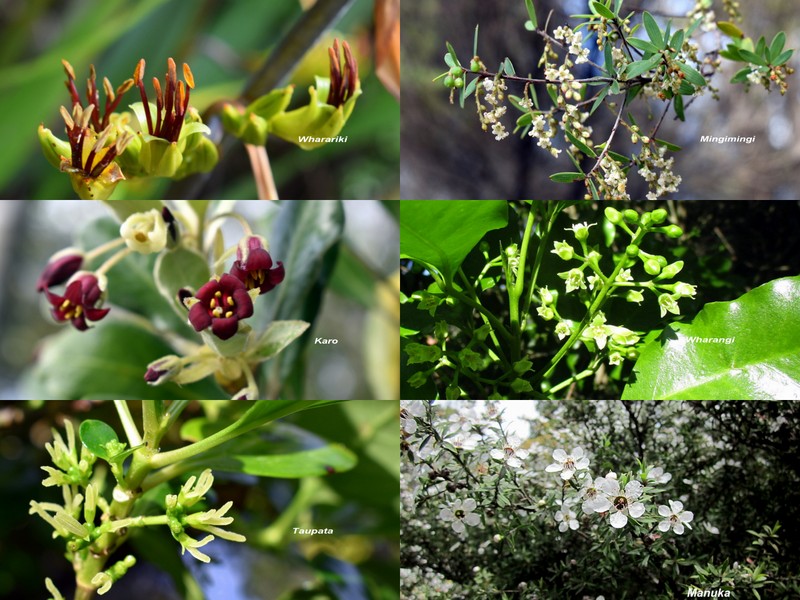
I am especially fond of mingimingi for its beautiful green-blue leaves, dark figured bark at its best when glistening with rain, and tiny dainty flowers with their delicate but haunting, sweet woody fragrance. What better place to end.
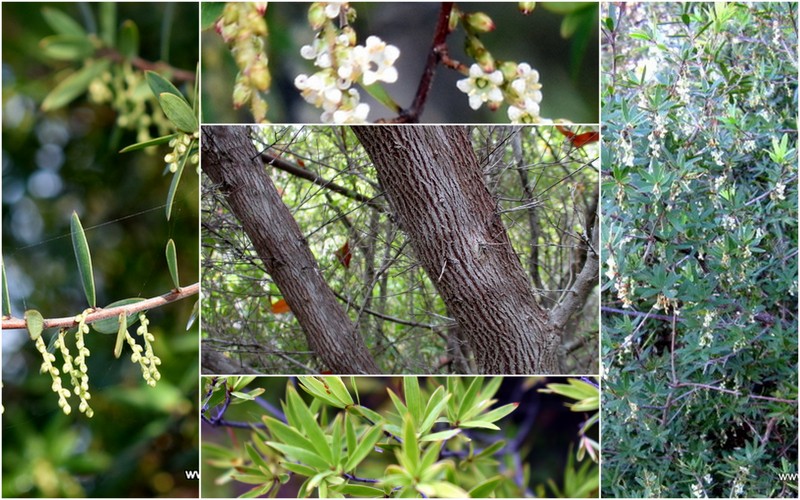
If you missed the first post in this series, Seeds of the Five Acre Forest, you can catch up with it here
And if you found pleasure in this post, please be kind and share it with others so they can enjoy it too.
Trish Nicholson is the author of The Five Acre Forest, a personal tale of tree planting that tells the deep-time story of a New Zealand sand-country landscape. ISBN: 978-1-80046-487-2 Natural sciences, 256 pages plus maps and 16 colour plates.
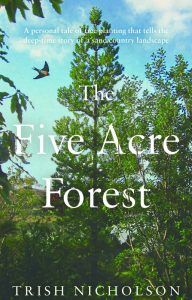 Available in bookshops in the UK; online worldwide (free delivery) from Book Depository, and from all other major online bookshops.
Available in bookshops in the UK; online worldwide (free delivery) from Book Depository, and from all other major online bookshops.
